Creative nature photography abstracts are often more about form, color, or mood than a specific subject or obvious point of interest. You can shoot details and abstracts at any time of day – no need to wait for the golden hour, or a fantastic sunset – and you can capture them anywhere… from your own backyard to the most popular photography hotspot of the moment. Abstracts can be a unique and compelling addition to your photography portfolio.
While simplicity and minimalism tend to be themes in my own abstracts, the process isn’t as easy as it may seem. Here are a few ideas to get you started capturing abstract photos that grab they eye.
#1: Look for Patterns & Shapes
Patterns are everywhere in nature. The challenge is in framing the shot. What do you include, and – perhaps more importantly – what do you leave out?
Jay loves to use a wide angle lens for nature photography abstracts. For this shot he used reflection to showcase patterns and color in sandstone formations in the Coyote Buttes region of Arizona. Jay placed his camera on a tripod and lowered it close to the ground. He zoomed in to fill the frame with pattern and color.
My own lens of choice for nature photography abstracts is my macro. I took this shot in the afternoon under bright sunlight at midday in Death Valley National Park in California. I sometimes include a clear point of interest in my abstract shot – though not always.
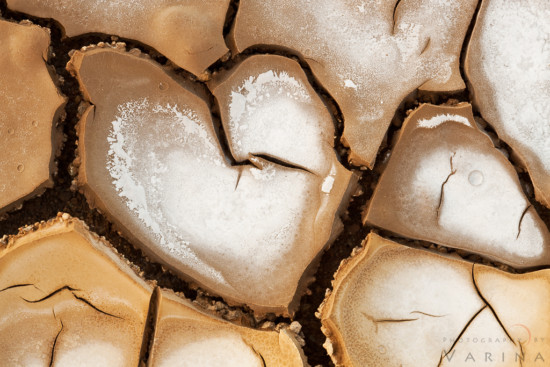
Nature photography abstract using familiar shapes – A Broken Heart, Death Valley National Park, California
In this case, I looked for a recognizable shape and filled the frame with the patterns in the cracked mud. Notice that the heart shape is the only closed shape in the photograph. This helps to define it as the point of interest.
#2: Creative use of Depth of Field
Sometimes a recognizable locations or object can be imbued with an abstract feel with the help of in-camera techniques, special filters or lenses, or processing. I took this photo of a Calla Lily using a Lensbaby 85mm Velvet lens to create a soft, glowing effect.

Creative abstract from unusual angles and shallow DOF – Calla Lily photographed with Lensbaby Velvet Macro Lens
I used two exposures to create my finished image. The first with a slightly narrower aperture to get the details I wanted in that tiny tip of the lily petal. I used a wider aperture to create a very narrow depth of field for the second shot, so I could completely blur out background details for a composition free of distractions.
Using a very shallow depth of field and selective focus is another effecting technique for calling attention to a point of interest within your frame. That buttery smooth background encourages your eye to settle exactly where I want it.
Here’s another fun way to play with blur. A heavy downpour in the Hoh Rainforest in Olympic National park gave me a perfect opportunity to capture a surreal and impressionistic abstract through a rain-spattered windshield.
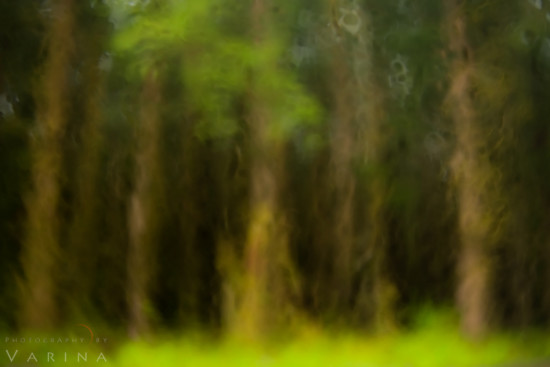
Abstract nature photography using selective focus and shallow DOF – Hoh Rain Forest, Olympic National Park
I used a wide aperture for a narrow depth of field, and set my focus somewhere between the windshield and the trees… so nothing is in focus. This is a fun technique for really rainy days when you might not pull out your camera otherwise!
#3: Capturing Motion Blur
It’s a lot of fun to play with in camera motion blur in nature photography. For this shot from Marble, Colorado, I moved the camera in a slow, smooth downward line. That in-camera motion produced the vertical blur that gives this abstract shot it’s watercolor feel. If you have repeating lines to work with, in-camera motion blur in the same direction can create a pleasing patterned effect.
Motion blur is endlessly fun to play with. I moved my camera to create blur in the above photo – but in the one below, I used the natural motion of the water instead. With my camera on my tripod, I used a 10 stop neutral density filter to allow for a very slow shutter speed on a bright sunny afternoon. I took this shot of Skogafoss in Iceland using a long lens. I zoomed in to avoid the rocks around the falls, and filled my frame with water and the subtle colors of a rainbow instead. The slow shutter speed softened the falling water into silky flow lines, providing a clean background for an unusual shot of these falls.
In this example above, I used a macro lens and a slow shutter speed to create a fine art abstract of a tiny stream of water flowing under overhanging rock at Rickett’s Glen in Pennsylvania. Once again, I was looking for something different from what others were shooting at this location. As loves as the waterfall was, I prefer to seek out original and completely unique shots that provide a fun challenge in the field.
Notice that I often use a very simple color scheme in my nature photography abstracts. As always, my goal is to simplify the composition in order to draw your eye to my subject. A minimalist color scheme works alongside my soft background to eliminate distractions.
Using Fast Shutter Speed to Freeze Motion
Jackson Pollock lived a short, reclusive life. His famous “abstract expressionist” works are an odd mix of extreme simplicity and desperate complexity. I’ve always loved the contradictory simple-complexity of Pollock’s works, and our trip to Australia provided a subject that inspired me to try to imitate the master himself.
I took this shot from a cliff top at Fisherman’s Bay. The sea was choppy that day, and a thick foam had formed on the surface of the water in an alcove surrounded by cliffs. Every time a wave came in, the foam would crash against the rocks – bursting in a strange, monochrome fireworks display that seemed surreal in its complexity.
The details were incredible, and every shot I took was completely unique. I took a few hundred photos – but this one was my favorite… by far. I love the simple beauty of the spray – and the intricate details that make it hard to look away.
A few tips for nature photographers who want to capture details in waves or foam:
- Overcast Day: An overcast day is a perfect time to take shots like these. Bright sunlight would have created really intense highlights and dark shadows that would have made the shot feel harsh and heavy. Overcast light gave me subtle shadows and soft details for a clean and beautiful mood.
- Fast Shutter Speed: Use a fast shutter speed to freeze the motion. I bumped up my ISO to 2000 to get a shutter speed of 1/4000 of a second at f5.6. I probably could have gotten away with a shutter speed of around 1/2000 of a second for these shots, but I was noticing some blur in test shots and I wanted to be sure to get really sharp focus. I chose to use my Canon Mk III because it handles noise pretty well at a higher ISO.
- Use a Tripod: Really. Sure – you can do this handheld. But have you ever spent an hour holding onto a full frame DSLR with a 70-200mm lens and a 1.4x mulitplier? Your arms start to ache. 🙂 I put the camera on the tripod for support, and loosened the ballhead so I could move the camera smoothly. My tripod took most of the weight, and I didn’t have to ice my shoulder afterward. 😉
Using Reflected Light
When we talk about using reflections, the first thing that comes to mind is capturing reflections on the smooth and still surface of a body of water. Most of us will ignore the reflections on a windy day when the surface of the lake is choppy – or in a flowing stream. But reflected light can make an image beautiful even when the reflection is blurred.
Jay took this abstract nature photo in Rickett’s Glen State Park in Pennsylvania. He positioned his camera so that the most intense reflected light surrounded a small cascade in the stream. The brilliant colors you see in the stream are reflected from vegetation that was lit by harsh, late-afternoon sunlight. He chose a long shutter speed that would preserve the flow lines in the water to create a pleasing abstract.
For me, the never-ending appeal of photography as an art form, is in the challenge of creativity. What simple techniques do you use to create interesting nature photography abstracts? Is this something you enjoy doing already – or is it an entirely new way of looking through the lens?
Visual Wilderness https://ift.tt/3cqL6vT
Sourced by Time Trap Photography sharing the best photography tips, news and tricks throughout the industry. Time Trap Photography is dedicated to freezing those special moments in life that can be revisited and admired for generations to come. - Shannon Bourque
Please visit our main site for booking availability and rates.

Receive valuable industry knowledge delivered free to your email each day.




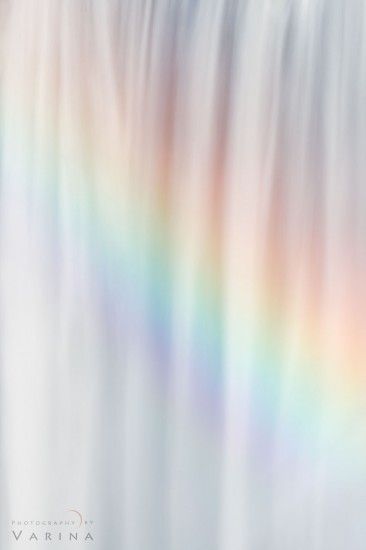
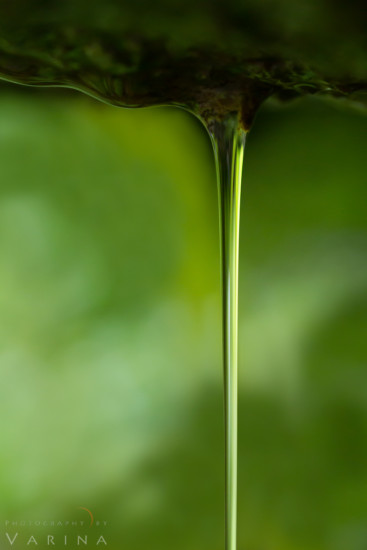
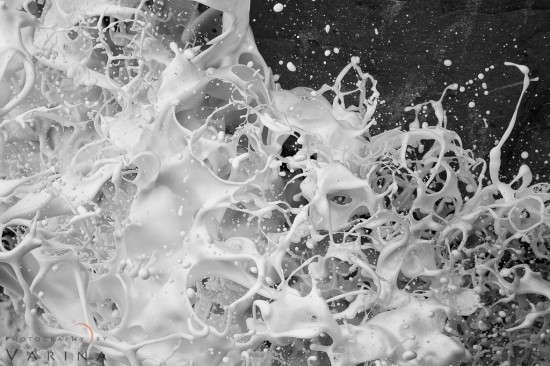
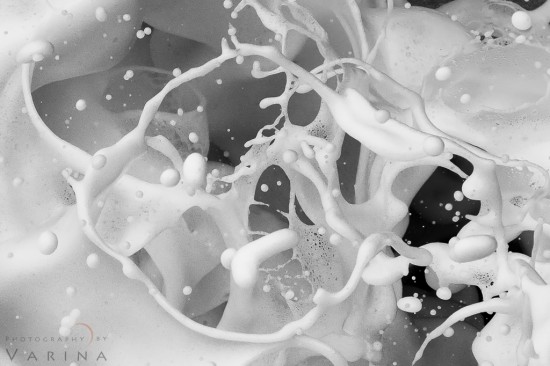






No comments:
Post a Comment
Thank you so much for your comment. A moderator will review and approve all relevant posts. We appreciate your support and encourage you to stay with us by subscribing to our email updates. Where you can easily pick and choose what photography subjects interests you. Subscription link: http://bit.ly/photo-sub